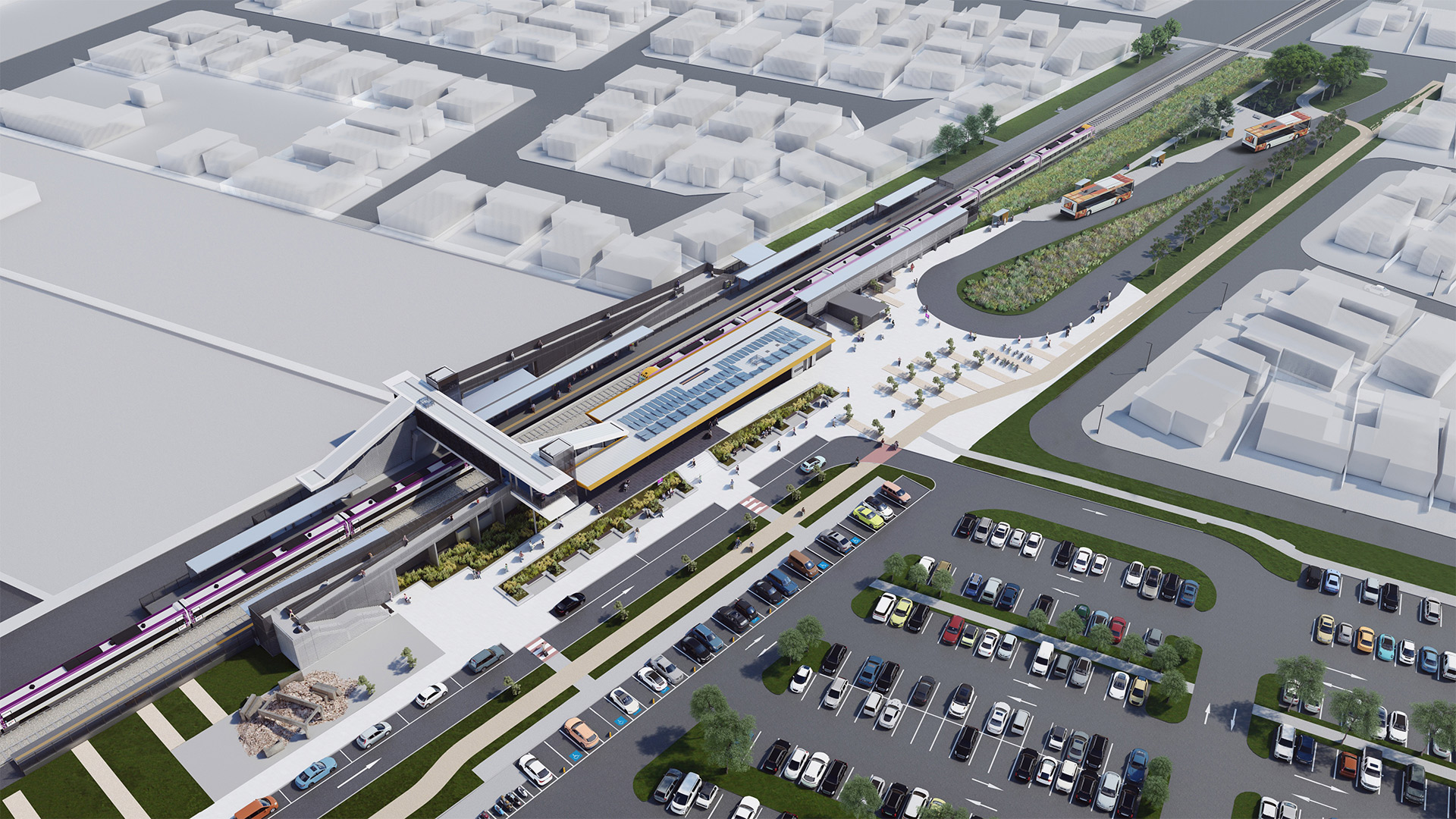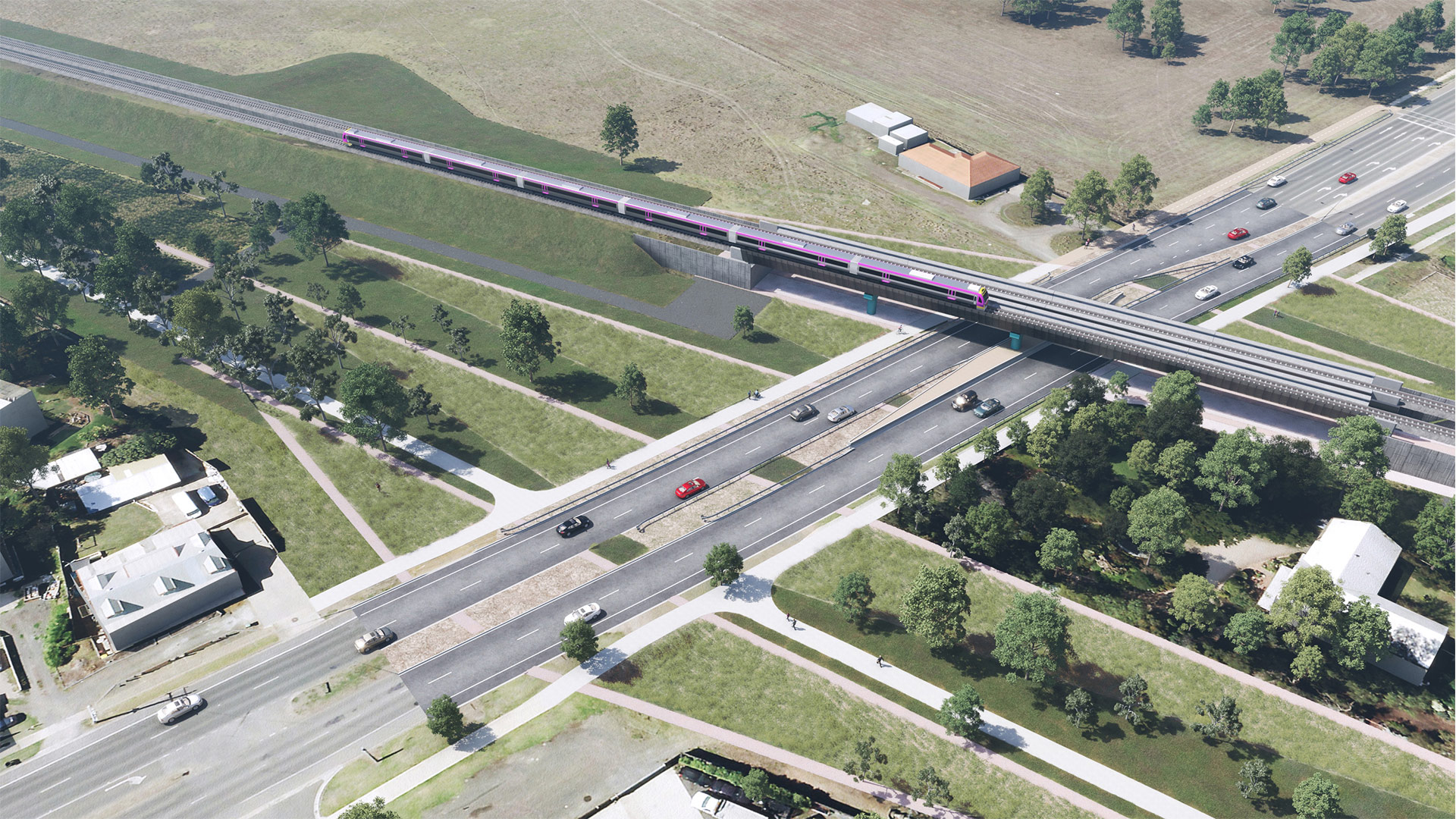1 August 2022
The South Geelong to Waurn Ponds Duplication project will enable more frequent services and better stations, as well as creating new green open space and landscaping that will reflect and enhance the local area.
We know that trees and vegetation are really important to the local community.
A major tree planting and landscaping program will commence as soon as construction on the project is complete and the trees and plants can be protected.
In response to feedback and to meet our environmental obligations on the project, native trees and plants will be used to enhance the local area and improve biodiversity.
We have engaged the Wadawurrung Traditional Owners Aboriginal Corporation and City of Greater Geelong to work together on the landscape plans and on climate resilient planting.
Through this process, we developed principles that have informed the landscaping and project design, including:
- greening the corridor
- consideration of water movement
- strengthening biodiversity
- promoting the area as a destination for wildlife
- sustainable use and selection of materials
- opening views across landscapes for commuters
- integrating Wadawurrung stories, graphics and language in signage and artworks for the project
- improvements to cycling and pedestrian amenity
- new and enhanced public spaces to gather.
Trees, shrubs and grasses will be planted in the station precincts and along the new shared user path once construction is complete. There will also be extensive re-vegetation around the Surf Coast Highway rail bridge, creating a green buffer between residents and the rail line, with a minimum of two trees planted for every one removed.

Marshall Station landscaping approach
Marshall Station will have a layered approach to planting including a tree canopy, low understory planting and grasslands. This layered approach will assist in moderating climate while providing food and important habitat for wildlife.
Diverse plants, with a focus on indigenous species, will line the Marshall Station green corridor, providing nesting opportunities for local wildlife and increasing community connection to nature.

Surf Coast Highway rail bridge landscaping approach
This area will include low grasses and groundcovers, interspersed with native trees. Planting of different textures and colours will provide variety in this area. Extensive indigenous trees, grasses and shrubs will visually soften the rail bridge embankments and maximise the ecological benefit of the open space. This area will include the planting of Yellow Gums (Eucalyptus leucoxylon ssp connata) collected from seed sourced and grown in the area and habitat logs sourced from site, strategically placed to improve habitat for wildlife.

Shared User Path landscaping approach
New canopy trees lining the path along the Surf Coast Highway will provide shade and wayfinding for pedestrians and cyclists. Planting along the shared user path will vary across the project, tailored to the surroundings and requirements. Feature planting will mark important intersections along the path. The new landscape features shade, seating, cycle amenities and wayfinding.
Planting approach
The planting approach focuses on key landmarks along the rail corridor and within station precincts, improving amenity, ecological value and overall user experience.
A mix of varied height shrubs, grasses and low‑lying plants that form ground cover will be used strategically along the corridor and at stations, to help soften the infrastructure, provide shade and create a diverse and interesting landscape for the community.
Native, climate-resilient trees and plants will make up a large component of the planting, to enhance the local area, improve biodiversity, and assist with sustainable water management along the rail corridor. These plantings will also provide habitat, shelter and food for native wildlife.
Trees are used to provide shade, break up the scale of the new infrastructure, mark important locations, provide informal signage and enhance ecological value. Trees have been carefully placed to ensure maximum coverage while adhering to V/Line, Barwon Water and Department of Transport safety requirements.
Tree planting and landscaping will occur as soon as construction is complete on the project. Where possible, we will plant semi-established trees to provide immediate screening and habitat benefits. Some example species that will be used in the landscaping around Marshall Station and Surf Coast
Highway precincts can be seen below.
